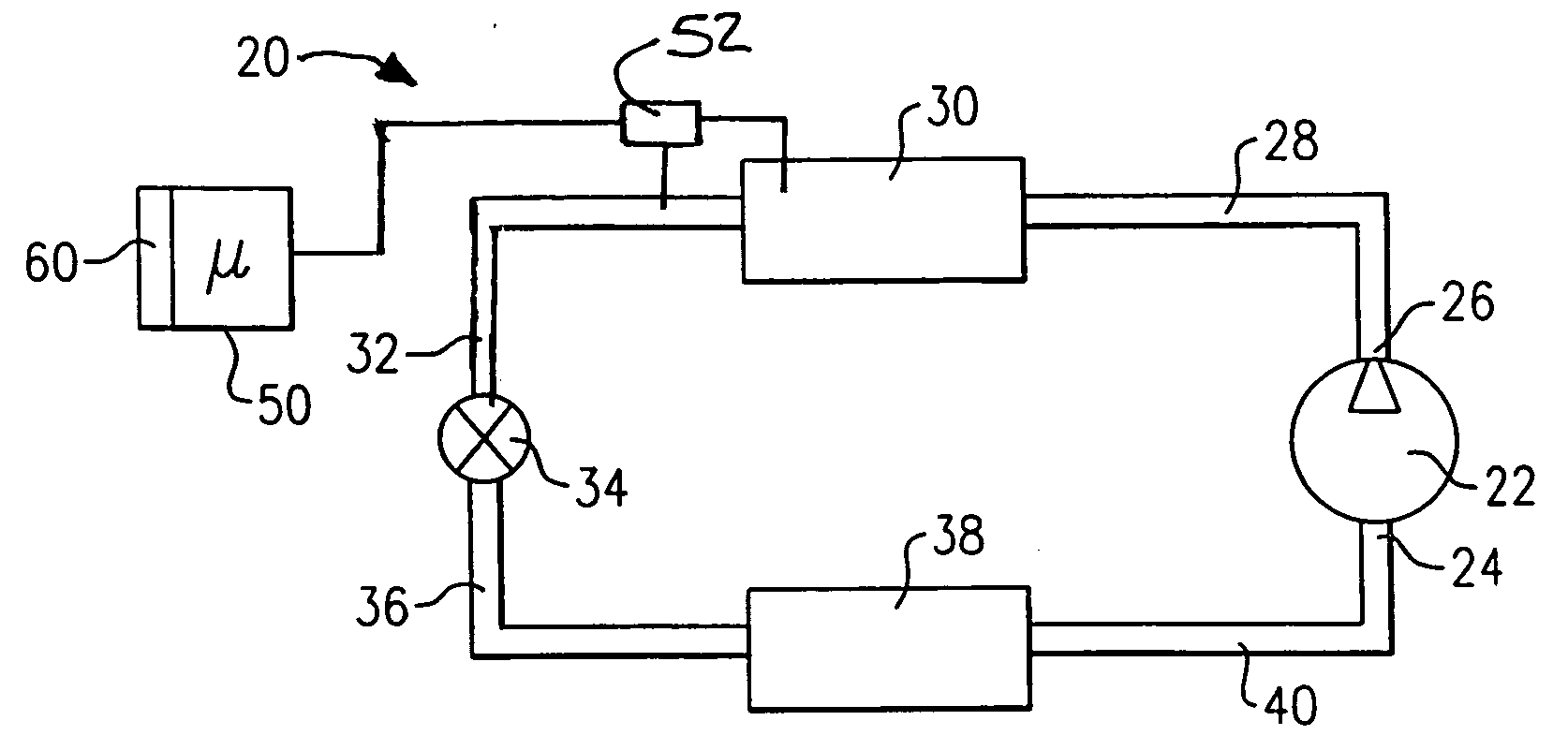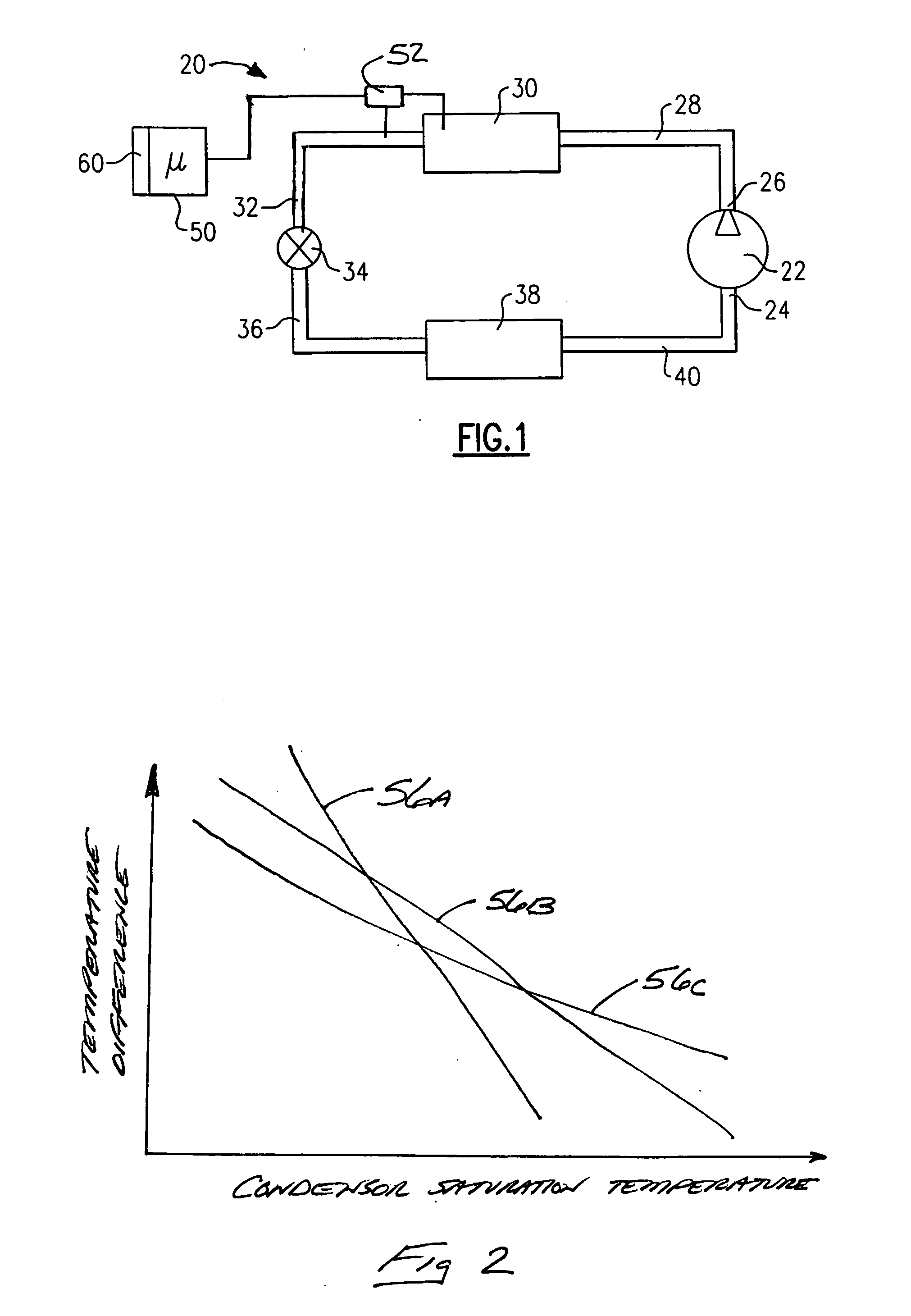Monitoring refrigerant charge
a technology of refrigerant charge and monitoring device, which is applied in the direction of refrigeration safety arrangement, refrigeration machine, sorption machine, etc., can solve the problems of affecting the ability of the system to provide adequate cooling, damage to system components such as the compressor, and inadequate refrigerant amoun
- Summary
- Abstract
- Description
- Claims
- Application Information
AI Technical Summary
Problems solved by technology
Method used
Image
Examples
Embodiment Construction
[0014]FIG. 1 schematically shows a refrigerant system 20 that may be used as an air conditioning system, heat pump or a refrigeration system. A compressor 22 draws refrigerant from a suction port 24 and provides a compressed gas under pressure to a compressor discharge port 26. The high temperature, pressurized gas flows through a conduit28 to a condenser 30 where the gas dissipates heat and condenses into a liquid as known. The liquid refrigerant flows through a conduit 32 to an expansion device 34. As the refrigerant in the conduit 32 typically is in a liquid state, the conduit 32 is sometimes referred to as the liquid line.
[0015] In one example, the expansion device 34 operates in a known manner to allow the liquid refrigerant to be expanded and to partially evaporate and flow into a conduit 36 in the form of a cold, low pressure refrigerant. This refrigerant then flows through an evaporator 38 where the refrigerant absorbs heat from air that flows across the evaporator coils, w...
PUM
 Login to View More
Login to View More Abstract
Description
Claims
Application Information
 Login to View More
Login to View More - R&D
- Intellectual Property
- Life Sciences
- Materials
- Tech Scout
- Unparalleled Data Quality
- Higher Quality Content
- 60% Fewer Hallucinations
Browse by: Latest US Patents, China's latest patents, Technical Efficacy Thesaurus, Application Domain, Technology Topic, Popular Technical Reports.
© 2025 PatSnap. All rights reserved.Legal|Privacy policy|Modern Slavery Act Transparency Statement|Sitemap|About US| Contact US: help@patsnap.com


